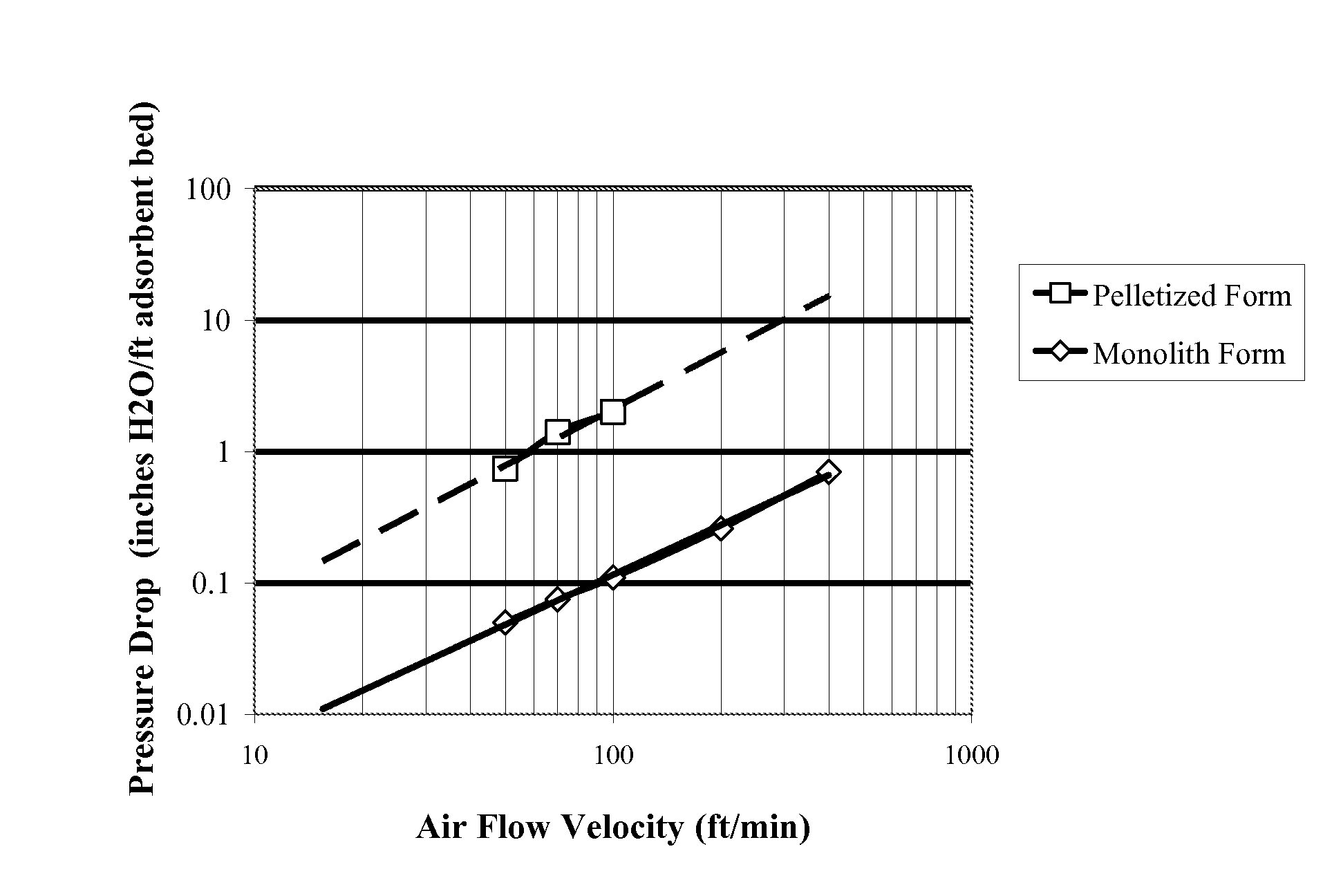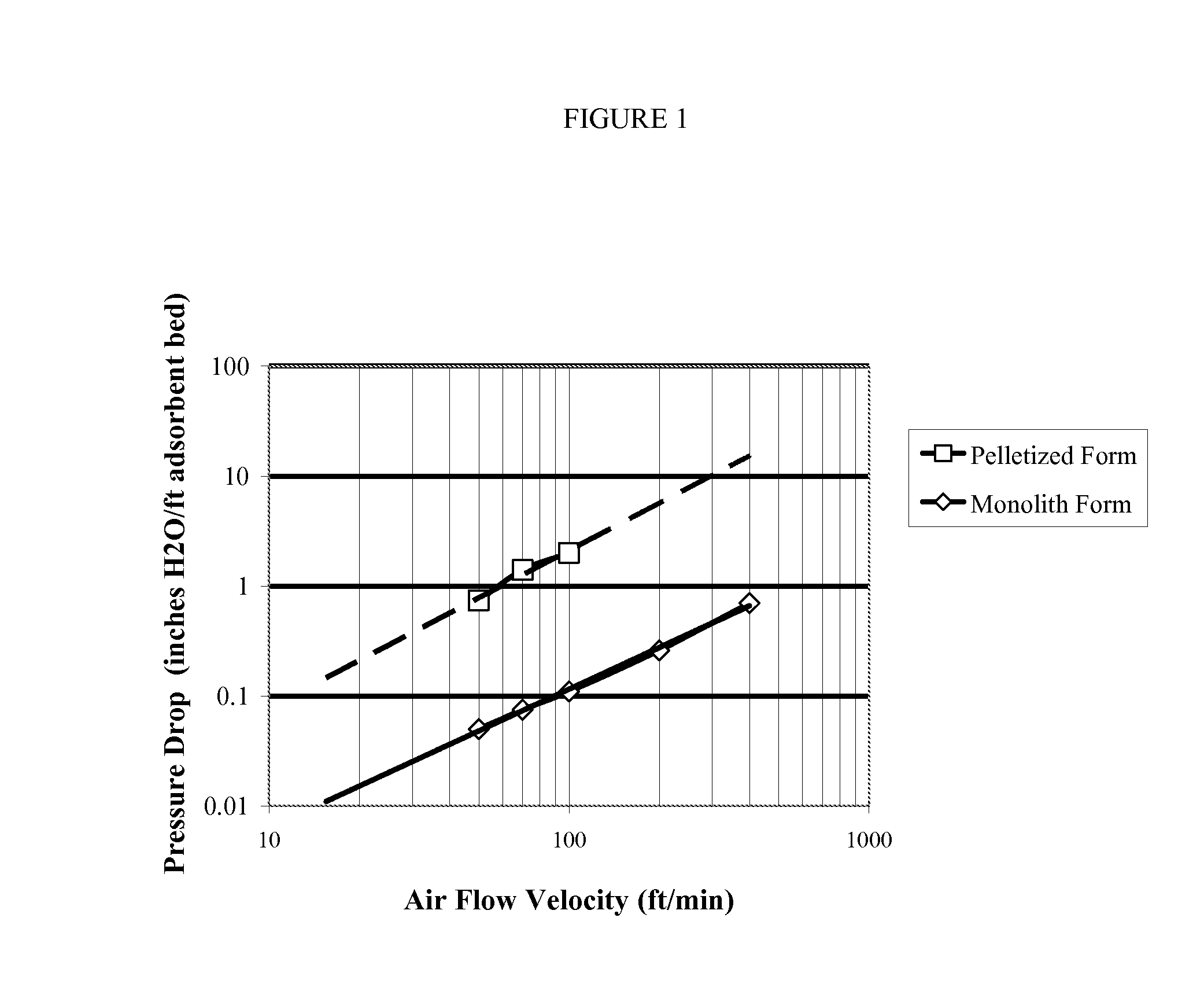Impregnated Monoliths
a monolith and impregnated technology, applied in the field of impregnated monoliths, can solve the problems of large amount of operation energy, difficult selective adsorption and removal of all of these malodorous and harmful components, and low rate and amount of elimination, so as to achieve low flow resistance and high adsorption capacity
- Summary
- Abstract
- Description
- Claims
- Application Information
AI Technical Summary
Benefits of technology
Problems solved by technology
Method used
Image
Examples
Embodiment Construction
[0017]The present invention now will be described more fully hereinafter, but not all embodiments of the invention are shown. Indeed, the invention may be embodied in many different forms and should not be construed as limited to the embodiments set forth herein; rather, these embodiments are provided so that this disclosure will satisfy applicable legal requirements. Based on the nature or type of impregnant, the invention adsorbent honeycomb monolith may have alternative and multiple uses.
[0018]The adsorbent honeycomb monolith suitable for use in the present invention may include, but are not limited to, activated carbon, silica, zeolite, alumina, silver, sintered metal, zirconia, titania, and other metal oxides, and combinations thereof. The activated carbon may be derived from various carbon precursors. These include, but are not limited to, wood, wood dust, wood flour, cotton linters, peat, coal, coconut, lignite, carbohydrates, petroleum pitch, petroleum coke, coal tar pitch, ...
PUM
| Property | Measurement | Unit |
|---|---|---|
| velocity | aaaaa | aaaaa |
| velocity | aaaaa | aaaaa |
| diameter | aaaaa | aaaaa |
Abstract
Description
Claims
Application Information
 Login to View More
Login to View More - R&D
- Intellectual Property
- Life Sciences
- Materials
- Tech Scout
- Unparalleled Data Quality
- Higher Quality Content
- 60% Fewer Hallucinations
Browse by: Latest US Patents, China's latest patents, Technical Efficacy Thesaurus, Application Domain, Technology Topic, Popular Technical Reports.
© 2025 PatSnap. All rights reserved.Legal|Privacy policy|Modern Slavery Act Transparency Statement|Sitemap|About US| Contact US: help@patsnap.com


